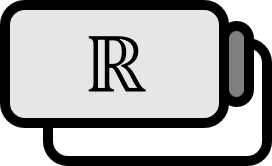Monotone Sequence and Monotone Convergence Theorem
Definition1
For the sequence of real numbers $\left\{ s_{n} \right\}$,
- If $s_{n} \le s_{n+1}$ holds, it is called monotonically increasing.
- If $s_{n} \ge s_{n+1}$ holds, it is called monotonically decreasing.
A sequence that is either monotonically increasing or monotonically decreasing is called monotonic.
- If $s_{n} \lt s_{n+1}$ holds, it is called an increasing sequence.
- If $s_{n} \gt s_{n+1}$ holds, it is called a decreasing sequence.
Explanation
Since a sequence is defined as a function with the natural numbers as its domain, the term monotonically increasing sequence is equivalent to a monotonically increasing function whose domain is the natural numbers. By definition, if a sequence is increasing (decreasing), it is also monotonically increasing (decreasing).
Convergent sequences are bounded, but bounded sequences are not guaranteed to converge. In the special case of monotonic sequences, being bounded is equivalent to being convergent.
Theorem
Let the real sequence $\left\{ s_{n} \right\}$ be monotonic. Then, $\left\{ s_{n} \right\}$ being convergent is equivalent to being bounded.
Proof
If it is bounded, it converges
Assume that $\left\{ s_{n} \right\}$ is monotonically increasing and bounded. The proof is similar for the monotonically decreasing case. Let $E$ be the range of $\left\{ s_{n} \right\}$. Then, there exists a supremum $s$ for $E$.
$$ s_{n} \le s,\quad \forall n\in \mathbb{N} $$
Then, for every $\epsilon > 0$, there exists an integer $N$ such that the following holds.
$$ s - \epsilon < s_{N} \le s $$
If not, $s-\epsilon = s$ being the supremum of $E$ would lead to a contradiction since $s-\epsilon \ne s$. Because $\left\{ s_{n} \right\}$ is a monotonically increasing sequence, the following holds for every $n \ge N$.
$$ s - \epsilon < s_{n} \le s $$
This implies the following, thus $\left\{ s_{n} \right\}$ converges.
$$ \forall \varepsilon >0,\ \exists N\in \mathbb{N}\ \mathrm{s.t}\ n\ge N \implies |s_{n} - s|<\varepsilon $$
■
Walter Rudin, Principles of Mathmatical Analysis (3rd Edition, 1976), p55 ↩︎
